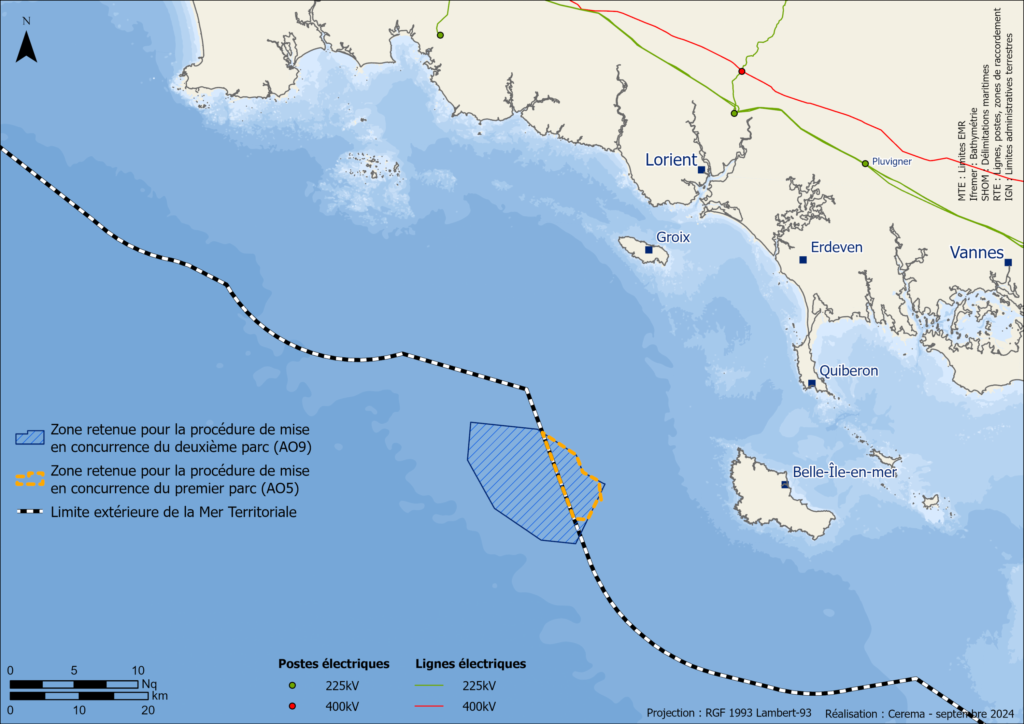The French government has shortlisted twelve candidates for the AO9 tender, offering four new sites for offshore wind development: one in South Brittany, two in the Mediterranean, and one in the French South Atlantic region.
France initiated the tender process in July 2024, completing the first phase. The next step is the competitive dialogue, followed by the proposal submission and selection phase.
The twelve developers pre-qualified for the project are: BayWa r.e.; a consortium of Elicio Group, Q Energy, and Kansai Electric; EnBW Valeco Offshore; a consortium of EDF Renewables and Maple Power; Iberdrola; a consortium of Ocean Winds and Banque des Territoires; a consortium of Oxan Energy and Ingka Investments; Plenitude and Qair; Parkwind; RWE; Skyborn Renewables and Octopus Energy; and TotalEnergies.
The AO9 offshore wind tender (l’Appel d’Offres 9) seeks to procure a floating wind farm with 400 MW to 550 MW capacity in South Brittany, two floating wind farms each with a 450 MW to 550 MW capacity in the Mediterranean, and an offshore wind farm with 1,000 MW to 1,250 MW capacity in the South Atlantic.
The South Brittany project is near a site awarded through the AO5 tender, secured by Elicio and BayWa r.e. earlier this year.
For the South Atlantic wind farm, the next tender phase will determine the use of fixed-bottom or floating wind technology.
In the competitive dialogue phase, French authorities will detail the tender criteria and maritime zones for the projects.
Following the developer announcement, Ingka Investments, part of Ingka Group (the largest IKEA retailer), noted its investment in over 10 GW of offshore wind capacity across six countries, now adding France as a seventh market. Its partner Oxan Energy will leverage its experience in floating offshore wind projects in France and globally.
Original Story at www.offshorewind.biz
